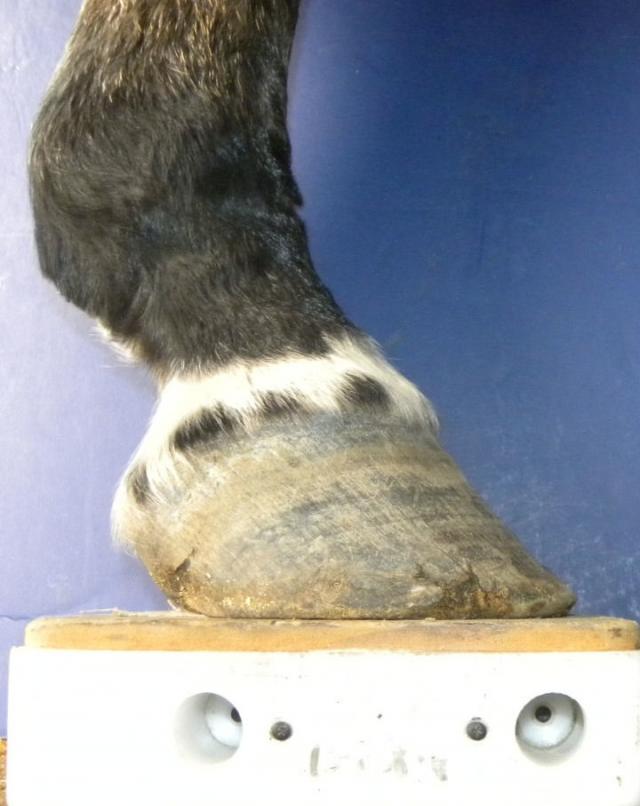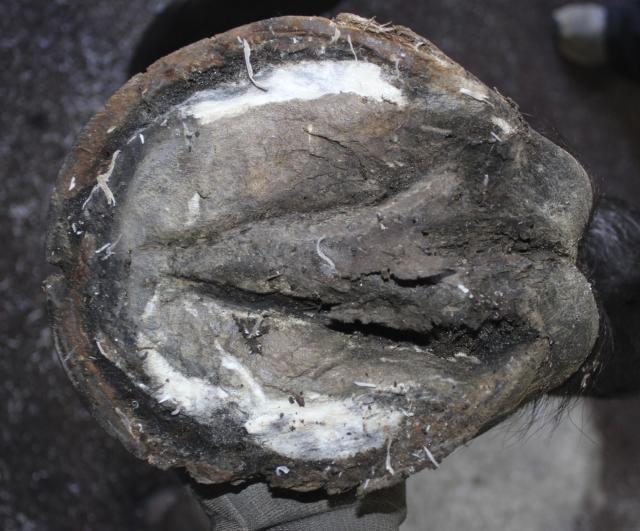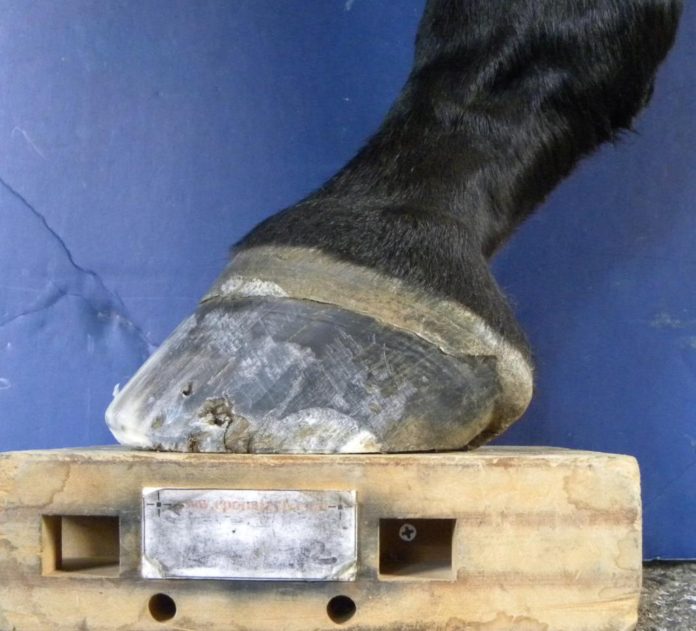We’ve all heard that pulling our horse’s shoes for the winter can be a good idea. But we’ve also heard how many pitfalls there are when we pull them.

Here is a breakdown of how we at Daisy Haven Farm in the Northeastern USA, a fairly wet, humid environment, help our clients who want to pull shoes for the winter.
Some of the challenges to pulling shoes:
- Chances are your foot may have minimal height once the shoe is pulled off. Some farriers advocate not trimming anything once the shoe is removed and instead prefer to allow the foot to grow. This has pros and cons.
- Your horse may be more sensitive or even considered painful when walking without shoes.
- You may have some foot infection to deal with around the white line or nail holes.
If you wait too long the ground may be frozen and make pulling shoes more difficult. - You may have to reduce the amount or kind of work your horse is doing until your feet are stronger barefoot again.
Fortunately we have many resources available to us to help minimize the challenges and set us up for success with this process.
First of all, work as a team with your farrier. Determine together if your horse is a good candidate to be shoeless over the winter. We interview our horse owners carefully before deciding if now is good time to pull those shoes.

Next tip for success: be willing to interpret your horse’s potential discomfort being newly barefoot as increased sensitivity and not necessarily being in pain. When a horse has a shoe on, he is receiving information from the ground differently than when barefoot. When shoes are newly pulled, we often see a horse will walk short-strided over uneven or abrasive footing. As long as your horse does not have heat in his feet or strong digital pulses, we believe it is safe to interpret the horse’s careful gait as just that, being careful.
That being said, it is VERY important that you are able to offer your horse some kind of temporary foot protection while she is adjusting. We carry a full line of EasyCare hoof boots in our truck to help ensure our horses don’t go from being just careful, to being bruised and truly painful. There is a very fine line between allowing your horse to condition his feet on the ground, versus causing trauma to his feet over terrain he’s not ready for.
Horse using an Easyboot Trail to transition from shoes:

The success of your hoof boot for turnout or riding is dependent on picking the a well-fitting hoof boot. Also, in our environment, the foot gets too wet and soft in the boot when worn 24/7. So make sure to give your horse time out of his boots in a dry area each day. We also recommend using Gold Bond powder in the boots on a daily basis to prevent the hoof from sweating in the boot.
As long as you have foot protection available, we believe it is safe to moderately trim the feet when they come out of shoes. Applying a roll on the wall will help minimize chipping and cracking over time until the nail holes grow out. Keep in mind that the more hoof material removed, the more the chance of your horse being footsore.
One way many of our owners help us minimize the chances of the horse being footsore after pulling shoes is by maintaining the roll on the wall in between our visits. That enables us to do less at our visit and yet still maintain the integrity of the foot as much as possible. We coach our owners to apply a bevel to the wall at a 45-60 degree angle in relation to the sole. Any chips should be gently removed as well.
Chips in the wall around the nails holes can be smoothed with the rasp.

Another important step to success is making sure to thoroughly disinfect the foot after the shoes are pulled and continue to treat any cracks, white line defects and nail holes until they are all grown out. Pick topicals that are non-necrotising, meaning they wont kill healthy tissue. We like to do a one time soak of Clean Trax and then continue with products like Fungidye in small cracks and defects and Artimud in larger separations and around the frog to help minimize breakdown of the foot due to infection.
Common defects in the wall that should be disinfected.

And lastly, if your horse doesn’t seem to be tolerating being barefoot very well, please call your veterinarian and get them involved. We find hoof topicals such as Venice Turpentine, Sore No More: The Sauce, and even Magic Cushion can be helpful to the transition process. Your vet can tell you if more intervention is warranted.
Pulling your horse’s shoes for the winter can be super easy, or quite complex really depending on the style of trim applied to the foot, the environment your horse lives in, and the health of your horse’s feet when the shoes are pulled. Working as a team with your farrier will help ensure your success.





